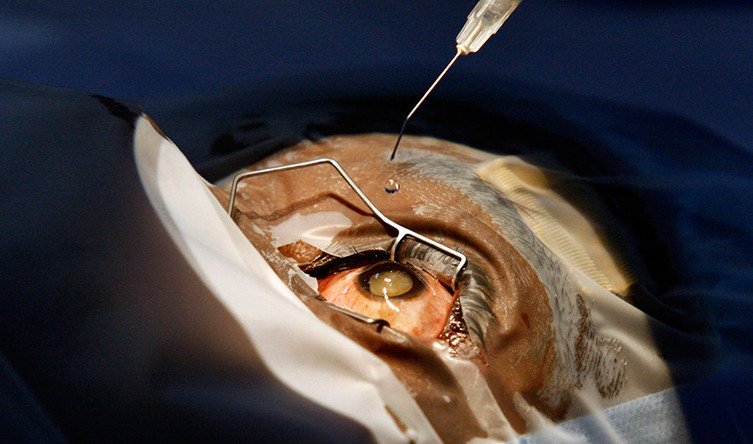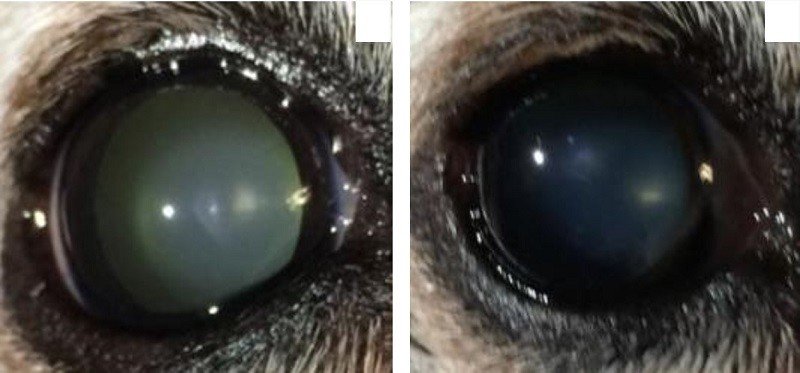Scientists create eye drop that dissolves cataracts with naturally occurring chemical

Getting rid of cataracts normally means surgery to remove them. But researchers have discovered that a naturally occurring chemical in the human body may dissolve the blinding cloudiness when used as an eye drop.
Cataracts ‒ or a clouding of the eye lens ‒ are caused by proteins clumping together blurring their victims’ vision and, if left untreated, eventually leading to blindness, according to the National Eye Institute (NEI). They affect 17 percent of Americans age 40 and older and more than half of those age 80 and older. Worldwide, tens of millions of people are affected, making cataracts the leading cause of blindness. Cataracts are initially treated with new eyeglasses, brighter lighting, anti-glare sunglasses or magnifying glasses.
“If these measures do not help, surgery is the only effective treatment,” NEI notes. “Surgery involves removing the cloudy lens and replacing it with an artificial lens.”
But Dr. Kang Zhang, a professor of ophthalmology at the University of California, San Diego (UCSD), thinks he may have found a different solution. His research has focused on lanosterol, a naturally occurring steroid that the human body already produces.
He and his team at UCSD’s Shiley Eye Institute studied two Chinese families in which the children had congenital cataracts, meaning that they were the result of a genetic defect, rather than age-related. They found that the kids with the congenital version had two copies of a mutation in the gene that produces lanosterol, but their parents did not have the same mutation. Normally, the gene produces the steroid, which prevents the cataract-causing proteins from clumping together. But the mutation caused an abnormality in the lanosterol, which allowed the cataracts to form.
“By screening families across the world for mutations that affect vision, we found four kids in two families with genetic aberrations in an enzyme called lanosterol synthase,” said Zhang, according to PBS ‘Newshour’.
#UCSD researchers discover molecule that reverses buildup of proteins that causes cataracts. http://t.co/hPN6IUZqOLpic.twitter.com/iqZvp5zP58
— UC San Diego News (@UCSDnews) July 23, 2015The researchers concluded that the steroid had a connection with the appearance of cataracts ‒ or the lack thereof. They then created an eye drop that contains lanosterol, which they first tested on rabbits that had cataracts. To test the drops, the scientists isolated the cloudy lenses from the animals and placed them in a lanosterol solution for six days.
The rabbits’ lenses became clearer and the severity of the cataracts were reduced after treatment, Zhang’s team found. The lanosterol solution had an effect on 11 of the 13 animals.
“We went on to test the effect of the eye drops in dogs with cataracts. We gave them eye drops twice a day for six weeks and found it had reduced the effect of cataract severity,” Zhang told IFLScience.
The researchers used seven dogs from breeds that are naturally prone to cataracts, including black Labrador retrievers, Queensland heelers, and miniature pinschers. Of the seven, three dogs' vision was cleared by the eye drops, while the other four showed improvement after six weeks of treatment.
“We saw an increase in the lens transparency and also decreased cloudiness of the cataract,” Zhang said.
Because the study only lasted for a few months, the cataracts are likely to redevelop, he told IFLScience.
Zhang’s next step is to figure out exactly how the eye drops work to dissolve cataracts, and then to begin human trials, Digital Journal reported.

Ophthalmologists not involved with the study said that the eye drops could become an extremely important tool in battling cataracts.
"It would have a huge public health impact," Dr. Robert B. Bhisitkul, a professor of ophthalmology at the UC San Francisco School of Medicine and who was not involved in the research, told the Los Angeles Times. "Preventing or reversing cataracts with an eye drop has been the Holy Grail in ophthalmology since the field began."
Dr. Manuel Datiles ‒ a senior investigator and attending ophthalmologist at NEI, which is part of the National Institutes of Health ‒ expressed cautious optimism at how the lanosterol solution might change the field, but warned that the drops won’t be able to replace surgery, at least not immediately.
“You cannot compare the improvements shown in this study with surgery. With cataract surgery, you become 20 years old again; with this one the lens is cleared up, but your vision can still be murky,” he told IFLScience.
He added that lanosterol isn’t the only way that researchers are trying to alleviate cataracts.
“There are other drops that do the same thing but use different pathways. This is why we need multifunctional anti-cataract agents that work together across multiple pathways to clear the lens,” Datiles said. “There’s now scope to investigate how we can combine this drug with other ones to better improve treatment.”
Zhang’s results were published in the journal Nature.












